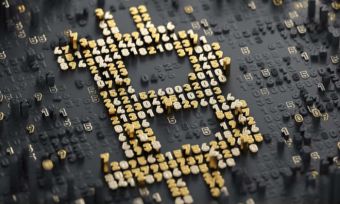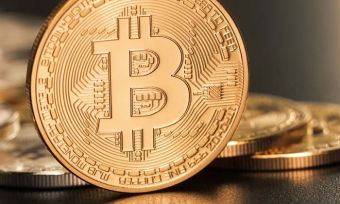Many people wonder how the price of Bitcoin is calculated, but it’s important to remember that it works no differently to other currencies or objects. In this article, we look at how Bitcoin really works.
How is the price of Bitcoin calculated?
Let’s first look at how the prices of most things are derived – we can use oranges as an example. What is the price of an orange?
Well, it depends. As a starting point, one would derive the price of an orange based on two things: how much someone is trying to sell it for, and how much another person is trying to buy it for. If John wants to sell it for $2.50 and Sarah is only prepared to pay $2, there is no deal. But if they agree on a price that works for both, let’s say $2.25, then the transaction will happen. If it’s winter there might be more people wanting to buy oranges, so that the price will go up. Or if there is a drought the supply of oranges will become less, so more people are trying to buy less oranges, which can also drive the price up.
Bitcoin and other currencies are a bit different from oranges in that they are what is called ‘homogeneous’ – one dollar is identical to another dollar, just as one Bitcoin is the same as another. Oranges on the other hand can vary in size and quality. All this means is that it’s easier to come up with a price of a currency or Bitcoin. Once again, just what a buyer and seller will agree on.
Many people might not realise that other currencies work exactly the same – if you are holding an Australian $100 note in your hand, at any given point in time there are millions of people buying and selling the Australian dollar on Forex markets, so while you might observe it as stable, it’s value actually continuously changes. When you want to exchange it for another currency at a currency desk, let’s say for USD, one day you pay $1.5 Aussie dollars for a US Dollar, the next day maybe $1.4 AUD for a USD.
Bitcoin works exactly the same way – you can just think of it as a currency other than the one you are used to. People all over the world are buying and selling Bitcoin, just like they are Australian Dollars, but they’re doing it on easy-to-use platforms and exchanges. Here, the price is constantly determined when trades for fiat currency (like the Australian Dollar) are made for Bitcoin, thus determining the price of Bitcoin in Australia.
→ Related article: How to buy bitcoin in Australia
Why is Bitcoin restricted to 21 million?
One of the many mysteries surrounding the creation of Bitcoin is why the total supply is restricted to 21 million.
There are a number of theories as to why Bitcoin creator, Satoshi Nakomoto, chose 21 million. Maybe they were a big table tennis fan? Maybe they enjoyed blackjack?
The answer, however, is likely simpler. When Satoshi created Bitcoin, the global M1 money supply stood at approximately $21 trillion. In economics, this is the global money supply that includes all physical currency and coins, demand deposits, traveller’s checks, other checkable deposits and negotiable order of withdrawal accounts. Every dollar can be divided into 100 cents, making the total number of pieces of money to exist at around 2,100 trillion.
Similar to cents for a dollar, a satoshi is the smallest unit of Bitcoin. There are 100 million satoshis in each Bitcoin, which means there will only ever be 2,100 trillion satoshis – roughly the same as the global supply in 2009. Based on this, Bitcoin would be well suited to replace all fiat currencies and have the ability to act as a global currency.
This theory aligns with email correspondence between software developer Mike Hearn and Nakamoto. In the email, Satoshi explains that he intended Bitcoin‘s unit prices to eventually align with traditional fiat currencies, so that 0.001 BTC would be worth 1 Euro, for instance.
“I wanted to pick something that would make prices similar to existing currencies, but without knowing the future, that’s very hard. I ended up picking something in the middle,” Nakamoto said. “If Bitcoin remains a small niche,” he added, “it’ll be worth less per unit than existing currencies. If you imagine it being used for some fraction of world commerce, then there’s only going to be 21 million coins for the whole world, so it would be worth much more per unit.”
There are other theories, too. Some believe that Bitcoin‘s 21 million limit was arbitrarily set by Nakamoto when he made two key decisions. That Bitcoin should add new blocks to its blockchain every 10 minutes (on average) and that the reward paid to miners halves every 210,000 blocks – roughly every 4 years.
The initial reward for miners was 50 Bitcoin for each block mined. It was then halved to 25 Bitcoin in 2012, 12.5 Bitcoin in 2016, and the latest halving took place in May 2020, when the reward was reduced to 6.25 Bitcoin. This halving sequence = 50 BTC + 25 BTC + 12.5 BTC + 6.25 BTC… = roughly 100.
By the time the block reward eventually hits 0, the number of coins generated happens to be just under 21 million.
Ultimately though, unless we hear it from Satoshi himself, we’ll never really know for sure. And it doesn’t really matter. The currency is effectively infinitely divisible. This means that the precise amount doesn’t really matter as you can divide it into whatever you can agree with another party, it’s just so long as the limit remains fixed.
Follow Investor Hub on Facebook and X for regular investment updates.
 Originally published at Luno. Republished with permission.
Originally published at Luno. Republished with permission.
→ Looking for more ways to create wealth? Learn more about Online Share Trading, Exchange Traded Funds and Cryptocurrency.
You can also compare health insurance, credit cards and life insurance and home loans with Canstar.






Share this article